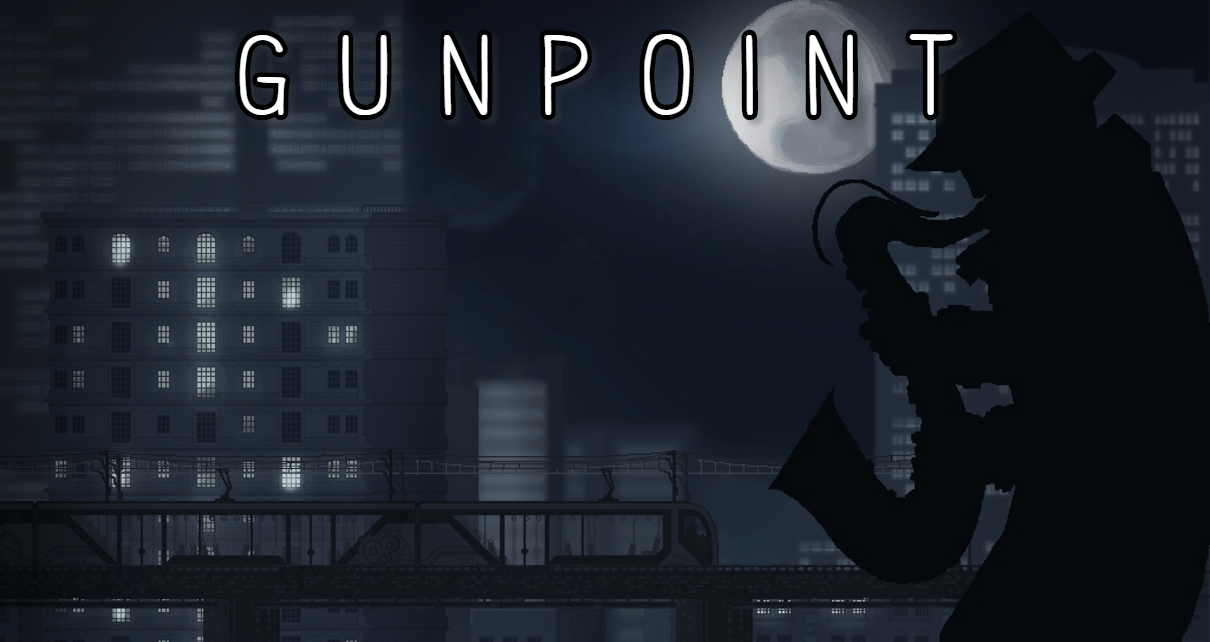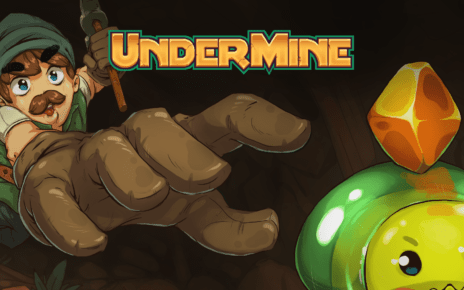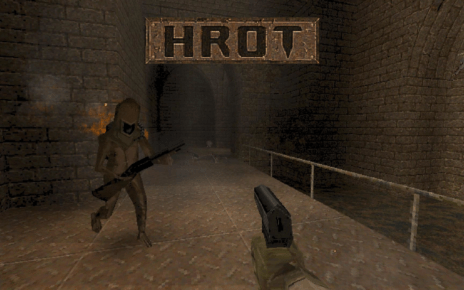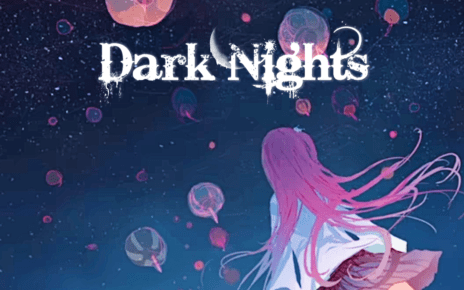Released by Suspicious developments on January 3, 2013, Gunpoint is a 2D stealth and puzzle platformer game available only for PC. The game is set in a noir-style near future and tells the story of freelance spy Richard Conway who is tasked to break into buildings and complete various actions, ranging from stealing documents to neutralizing all security personnel without getting caught. (To those who don’t know what “noir” means, it is French for “black”. It is also a style of storytelling revolving around dark, gritty crime fiction mostly characterized by the 20’s to 40’s era. You know, that whole “saxophone, private detective, cigars, trench coats and a monologue by some guy in his mid-40’s with a serious hoarse voice problem” aesthetic seen in movies like “Chinatown, Double Indemnity and Sin City” or games like “Max Payne and Grim Fandango”).
Throughout the story, Conway seeks to clear his name in the murder of a high-profile, well-respected weapon manufacturer, as well as uncovering the real killer behind his death. The use of ironic and intelligent humor, allied to the moody music, noir ambiance, and mystery story, create an unforgettable experience; which manages to immerse the player in the deep and complex world Gunpoint is set in. This indie gem proves that developers don’t need mega-production budgets to create a mesmerizing and charming experience.
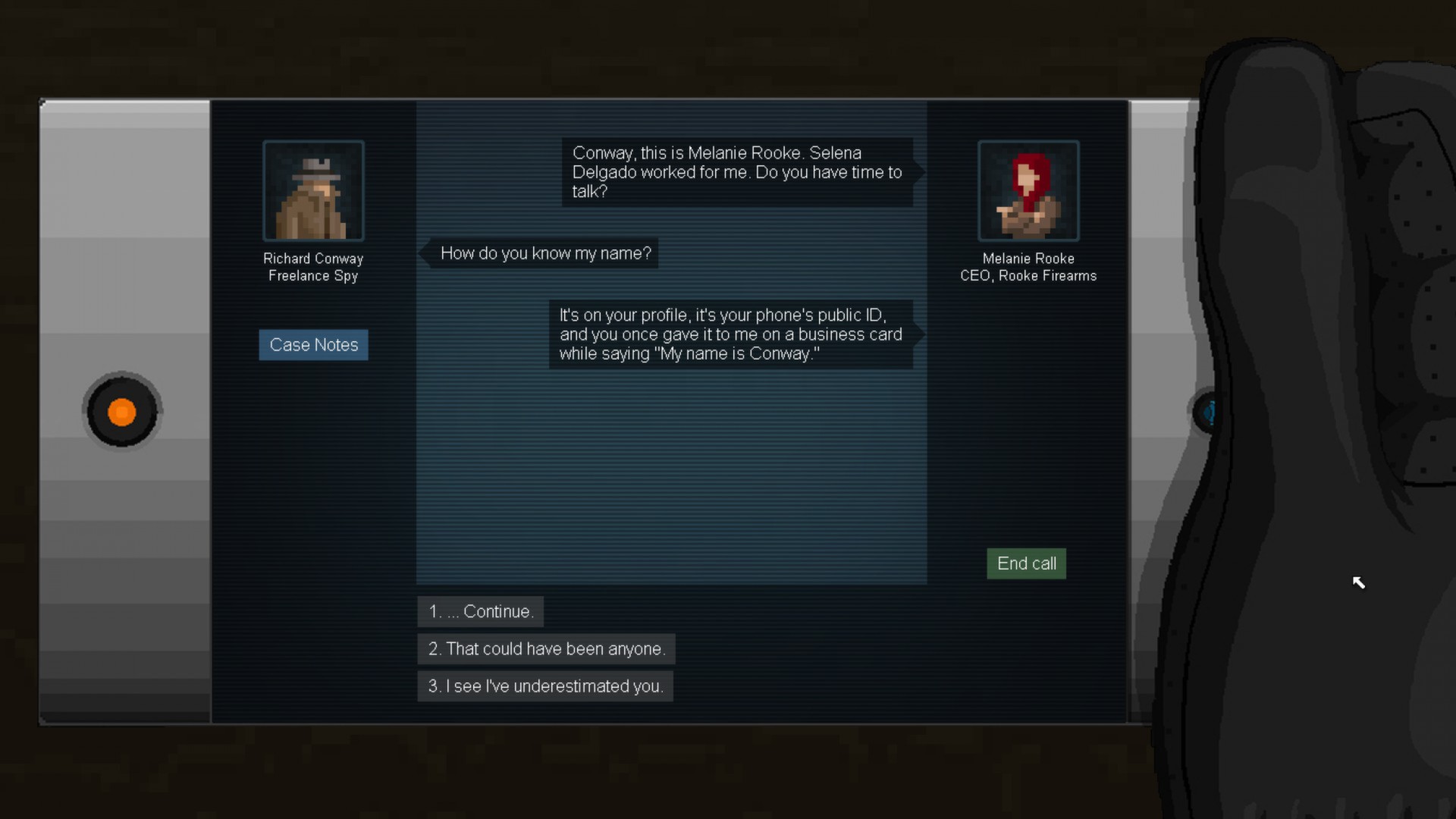
The game’s soundtrack is absolutely amazing and does an exceptional job of conveying the noir aesthetic presented. All of the songs seem to communicate different aspects of Gunpoint, as they were composed by three separate artists (Ryan Ike, John Robert Matz, and Francisco Cerda), each with their different approaches. John Robert’s pieces are slow and melancholic, perfect for a menu screen or a pause between each level. Ryan Ike’s style, however, combines the elegance of old school jazzy music with modern electronic sounds and samples, which delivers songs that address both Gunpoint’s old-fashioned and high-tech, cyber sides. Finally, Francisco Cerda’s melodies stay completely true to the noir style, differing from John Robert’s only in pace, as he tries (and succeeds) to communicate a more frenzied, delirious atmosphere. Such an amazing soundtrack can only be exalted by a wonderfully crafted and well-thought art style.
Following many applications for possible art styles submitted by interested professionals and later featured in his blog, Tom Francis (programmer, writer, and designer of Gunpoint -I love this guy-) chose John Roberts and Fabian van Dommelen as the game’s artists. John’s character design alongside Dommelen’s environmental art create a rather simple and tiny, but effective and impactful visual setting that addresses both the noir charm of the game and its cyber setting. The art style only contributes to making the gameplay more enjoyable and “spy-like”, as it certainly makes you feel like Batman an elegant spy detective.
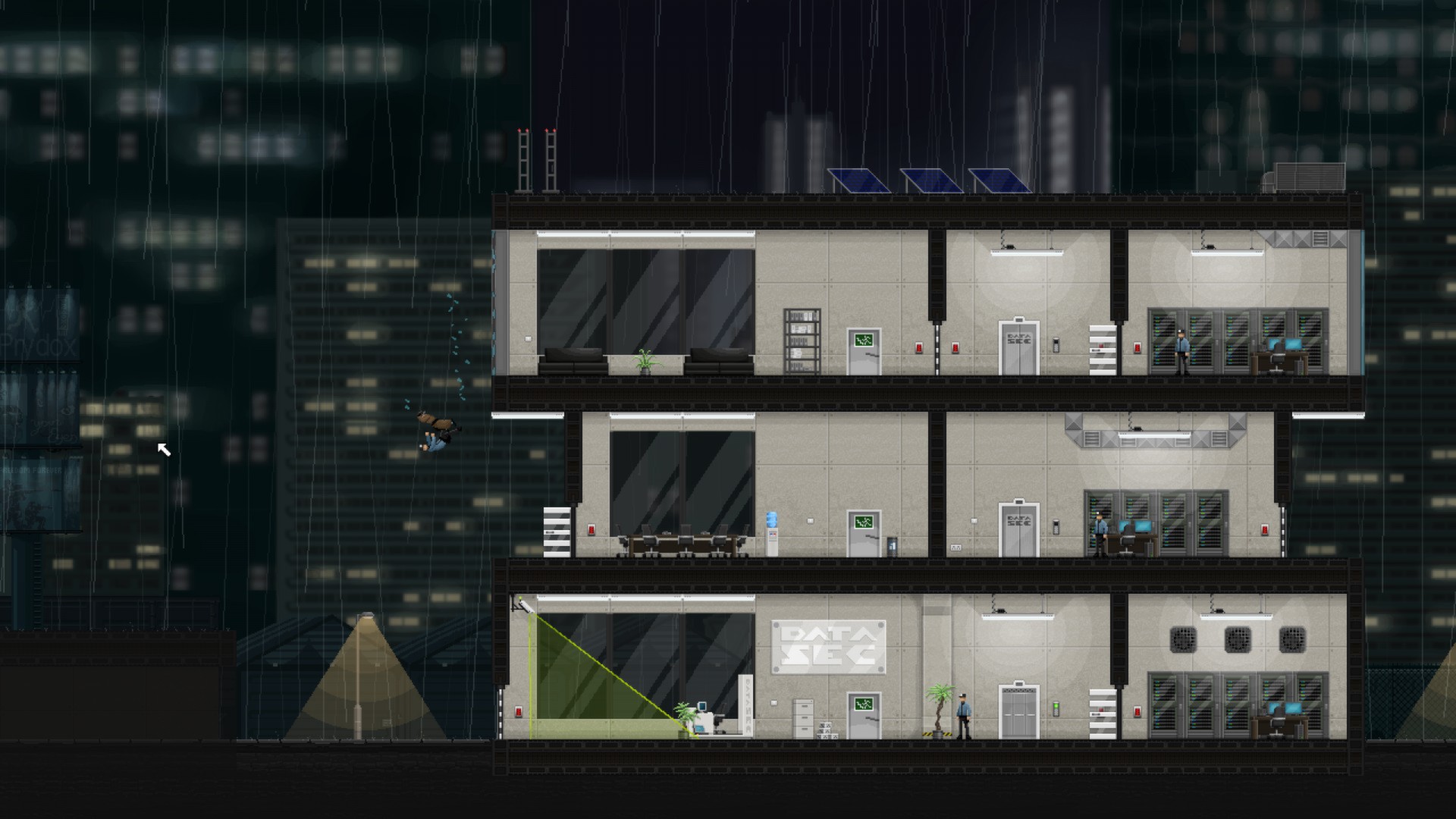
To fulfill different tasks, the player is given various tools, such as the Crosslink and a hilarious pair of cyber trousers. The gear is upgraded via an in-game shop and though the game offers a vast set of gadgets with countless functions, they are never overwhelming. This is because the clever game design, which allows different approaches to various situations, still offers challenging puzzles and enemies.
When using the Crosslink, the game enters a “hacking mode” which allows players to link different parts of the environment and rewrite buildings’ circuits. This flexibility can create interesting and often funny situations. One example is linking a light switch to a different lamp and then linking the lamp’s original switch to a door, so when an enemy tries to turn on the lights, the door bangs their head and non-lethally takes them down. Another example is to open a door, you can link a guard’s gun to a light switch which, in turn, is linked to the door you’re planning to open. Then, if you appear in front of the guard and he tries to shoot you, his efforts, instead, will open the door for you, and then you’re free to choose if you want to beat him to death or render him unconscious like the angel you are.
The cyber trousers give the player the ability to launch Richard Conway in the air (kind of like an Angry Bird), climb walls, break glass, survive long falls, and take enemies down, so you can beat them until they’re unconscious… or dead.
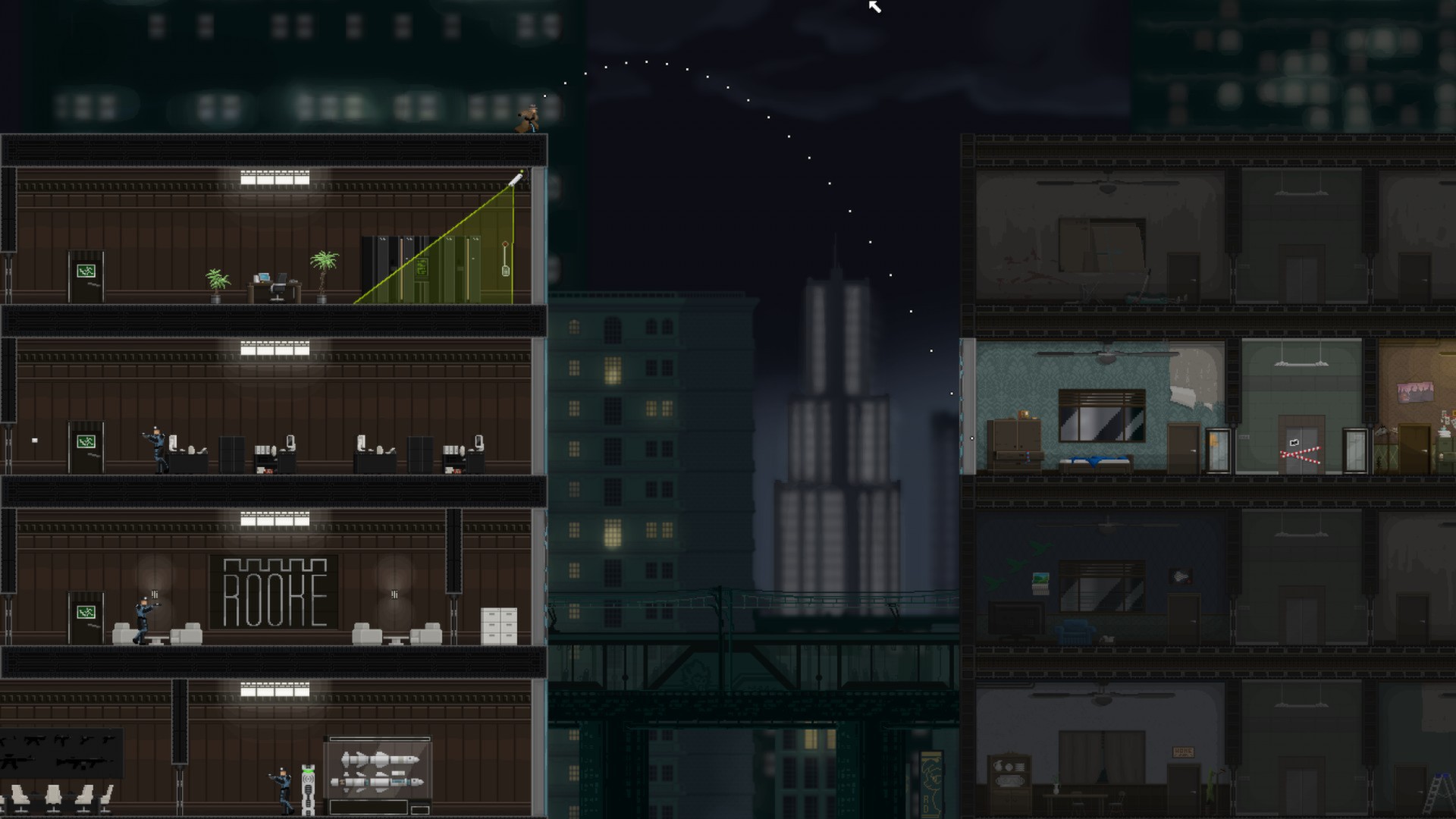
All of these options compliment the satisfying movement controls. When they’re implemented alongside well-thought gadgets, upgrades, and stealth mechanics, a flexible gameplay experience with endless possibilities is conceived. The game further encourages experimentation with its innovative saving system, that autosaves every few seconds: when dying, you can choose between a few options that allow you to load from 2, 5 or 10 seconds before failing the mission, as well as from a manual save.
These gadgets and mechanics are very much needed, as being spotted and dying miserably is as common as the autosave system makes it sound. Guards are extremely vigilant at all times: if you appear anywhere in their line of sight you are immediately shot down, with no time to react whatsoever. Additionally, any noise made will alert all of the guards near the area, which can be both an advantage when attracting enemies to desired locations and a penalty when a specific room is only accessible by body-slamming yourself against a glass wall.
Between each level, the game gives a break by allowing players to visit a hub, in which they can spend their points in upgrades and choose missions. The conversations Richard Conway has with his contractors when selecting missions are hilarious and, by giving different dialogue options, the game essentially lets players themselves decide what kind of character Conway develops into. From a sarcastic, self-aware satirical detective story, to a narrative of a serious agent committed to his work in a corrupted world, Gunpoint is basically whatever you want it to be, without shifting from its noir aesthetic and sardonic humor.
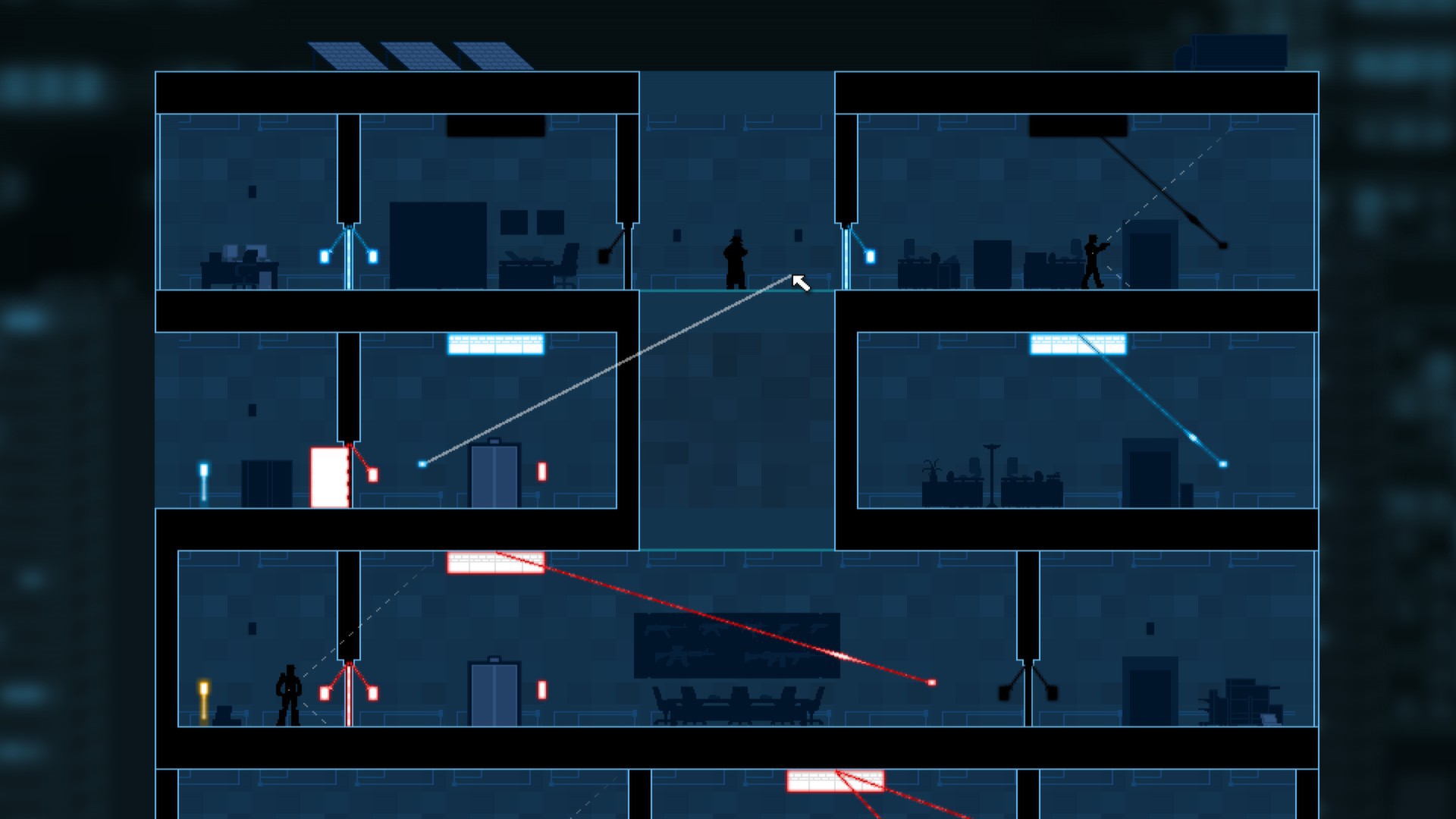
Gunpoint is, sadly, a very short game. As it evolves and adds new mechanics that would shine in dozens of levels yet to come, it ends not much later after presenting them, without giving nearly enough time to play and experiment with the abilities. Thankfully, the game has a lot of replay value, including a level editor worth messing around with (letting you experiment with various tools and upload your levels to Steam’s Workshop system), hilarious and very fun achievements that offer new ways to play (such as completing certain levels without being noticed or not using violence on a mission that has guards) and different endings according to your actions.
Overall, Gunpoint is absolutely worth your time and money. It manages to bring innovative mechanics, an engaging mystery story and noir aesthetic, emphasized by superb music and wonderfully crafted visual art. All of these elements are blended into a memorable experience, in a surprisingly short campaign of around 3 hours. Despite certainly not overstaying its welcome, Gunpoint is unquestionably remarkable and unique.
You can buy the game here on Steam or here on Humble Bundle. Purchases made via Humble Bundle links earn a small commission which goes to help supporting domain and server costs.
I am Atlas, hello. Honestly, there isn’t really anything worth mentioning about myself, but I am required to create a blurb for this site regardless. I enjoy most types of games, especially stealth and FPS. I also like games with slow motion firefights and/or that feel realistic, as in, you and the enemies both die in the same amount of hits. Max Payne, Hotline Miami, DEADBOLT and My Friend Pedro are good examples.

